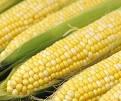World Agrinews
Corn Fungus Causes Worry, But Scope Seen Limited
Concern about fungal disease in corn has rippled through both the corn and soymeal futures markets late this week, but on the ground those ripples might not extend beyond parts of the northeast corn belt.
- Read more
- 2306 reads
Rain Boosts Argentina Soy Crop, But Too Late In West
With the El Nino weather system building, heavy rainfall has already coated the south of Brazil and Uruguay and is moving south to soak most of Argentina’s farm belt.
- Read more
- 2167 reads
KC Fed Survey Finds Steady Farmland Prices, Weak Farm Incomes
Asurvey of local lenders conducted by the Federal Reserve Bank of Kansas City finds that farmland values in the central Plains/western Corn Belt held steady during the third quarter of the year, despite falling farm income and weaker agricultural credit conditions.
- Read more
- 1935 reads
India Winter Wheat Area Until Nov 12 Up 5% At 5.7M Ha-Govt
India’s winter-sown wheat acreage up to Nov. 12 rose about 5% on year to 5.67 million hectares, according to government data Friday, which could help cushion a shortfall in summer-sown foodgrains production.
- Read more
- 2112 reads
Cattle Drop as Lower Beef Prices Signal Demand Slump; Hogs Fall
Cattle futures fell to the lowest level in five weeks as wholesale-beef prices slipped, signaling consumers may be slowing purchases as the economy slumps. Hogs also dropped.
- Read more
- 2133 reads
Corn Futures Decline as Dry Weather May Speed U.S. Harvest
“We ran into some farmer selling above $4 today,” said Greg Grow, the director of agribusiness for Archer Financial Services in Chicago. “Farmers are making progress harvesting this week.”
Corn futures for December delivery fell 0.5 cent, or 0.1 percent, to $3.94 a bushel on the Chicago Board of Trade. Earlier, the price reached $4.03, the highest level for a most- active contract since Oct. 23.
- Read more
- 2257 reads
Russia Harvests 101.4 Mln Tons Grain To Nov 11
Russia harvested 101.4 million metric tons of grain in the year to Nov. 11, down 12.5 million tons from the same date last year, the agriculture ministry said Wednesday.
- Read more
- 2081 reads
USDA Cuts Corn Output Estimate, But Crop Still Second Largest
The U.S. is still on track to produce its second-largest corn crop in history, even as the government lowered the projected size of the crop. The U.S. Department of Agriculture on Tuesday cut its estimate of the U.S. corn crop to 12.9 billion bushels, down 1% from its October estimate, based on a slightly smaller national corn yield estimate. Only in 2007 did the U.S. grow more corn. Tuesday’s estimate for the current corn crop is also 7% above 2008’s crop size.
- Read more
- 2505 reads
USDA Forecasts Record 2009 Production For U.S. Soybeans
U.S. 2009 soybean production is expected to reach a record high 3.32 billion bushels, as the U.S. Department of Agriculture on Tuesday raised its crop size and yield estimates. In its monthly crop production report, the USDA said the 2009 crop estimate is 2% above its October forecast and 12% above 2008’s level. Yields are also seen up from last month and last year, at 43.3 bushels per acre, which, if realized, would be the largest ever. The USDA raised yields by 0.9 bushels from October’s estimate, which itself would’ve been a record, and 3.6 bushels from last year.
- Read more
- 2516 reads
Measures of state regulation and the influence on grain market of Russia
The realization of the governmental policy, which will provide favorable conditions for existence and development of the domestic grain production, which the basis of the agro industrial complex of the country, is main task of the state regulation of the market of grains. To date, the market of grains faces the problem of insufficient development of infrastructure and high infrastructural charges. Russia needs advance development of own infrastructure for the normal functioning of the market of grains.
- Read more
- 2123 reads








